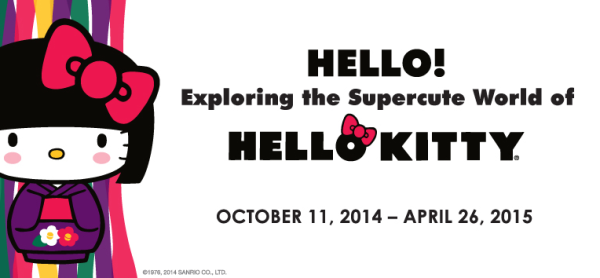Dear Hello Kitty Fans,
I know you’re upset that Sanrio has recently surprised the world by saying that Hello Kitty is not a cat. But really, as a long-time Sanrio fan, I’m not sure why many of you are quite so irate about the whole thing. So she’s not a cat. So this probably also means that Keroppi’s not a frog and Pekkle’s not a duck. But none of these revelations should truly change who Hello Kitty is to all of us. As she turns 40, her importance to fans — or at least her importance to me — remains the same.
This “scandal” emerged as a result of a new Hello Kitty exhibition opening at Los Angeles’ Japanese American National Museum this fall. The curator, Christine R. Yano, wrote in the exhibit text that Hello Kitty was a cat. Sanrio corrected her to firmly state that Hello Kitty is not a cat. Instead, they insist she is a little girl and a friend. In cartoons and on notebooks and airplanes, she walks and stands and sits like the millions of people who love her around the world. My personal reaction? *Shrug*
Her power to be an icon has not diminished; we are merely being asked to look beyond her obvious appearance to consider that behind that iconic face there is meant to be a personality. And that what we can imagine her to be–is anything. In a stroke of marketing genius, Sanrio created childhood (and adulthood) playtime utopia – a Kitty for all our feelings, all our costumes. A character that allows us to project onto her.
In response to the internet’s outrage, Sanrio released a statement to acknowledge that she is, indeed, “a personification of a cat,” because of course it would be inaccurate to say that Kitty and many of her friends bear no resemblance to any animals whatsoever. Perhaps you are now less upset over this seemingly “life-altering” revelation.
At the end of the day, does it really matter? To this Asian American girl, the statement that she is not a cat could never taint her special place in my heart. Growing up, I could consider Hello Kitty, Keroppi, Badtzmaru and the whole gang as special in a ways that other stuffed animals were never able to rival. So it neither ruins my childhood nor changes my perspective on it.
Yano, who has studied Hello Kitty extensively, explains Kitty’s particular importance to Asian Americans:
“When Hello Kitty arrived in the U.S. in the mid-1970s, it was a commodity mainly in Asian enclaves: Chinatowns, Japantowns, etc…In talking to Japanese Americans who grew up in the 1970s, they say, ‘That figure means so much to us because she was ours.’ It’s something they saw as an identity marker. This is why the exhibition is being held at the Japanese American National Museum. It’s about reconnecting her to this community. It gives the whole thing a certain poignancy and power.”
My cousin was born in the 1970s and I imagine she would say something similar about the Hello Kitty doll my mother gave her as a child (which she still has). She and I are both Chinese American, but Yano’s statement nevertheless rings true. I grew up after Hello Kitty was more popular — in an era when I could visit the Sanrio Store in the Mall of America. We now living in a time where I can fly a plane with Hello Kitty emblazoned on the side or buy a Kitty cheering for my favorite baseball team.
Both today and historically, Sanrio characters are icons for Asian Americans. Hello Kitty and others like her not only feel and felt like “ours” in moments of happiness, but also in the moments when the feeling of belonging was lacking. For the moments of my childhood when there was only one American Girl “look-alike” doll that even vaguely resembled me (in the pre-Ivy days), there was Hello Kitty to represent me. A younger version of myself used the world of Sanrio to express an Asian American identity before I was even fully conscious that I needed to. At one point, I had a hellokitty.com email address, and at another point, an email that used the name of a different Sanrio character. And still today, for the moments when I feel like an outsider, Hello Kitty continues to endure and her international presence is encouraging.
And so, Hello Kitty can personify a cat or she can personify a mermaid. Or she can personify Batzmaru, who has always seemed like a grumpy old man more than anything else. Hello Kitty likes apple pie. I like apple pie. Cat or no cat, that’s all that matters to me.
Sincerely,
A Fellow Fan
Image courtesy Japanese American National Museum









